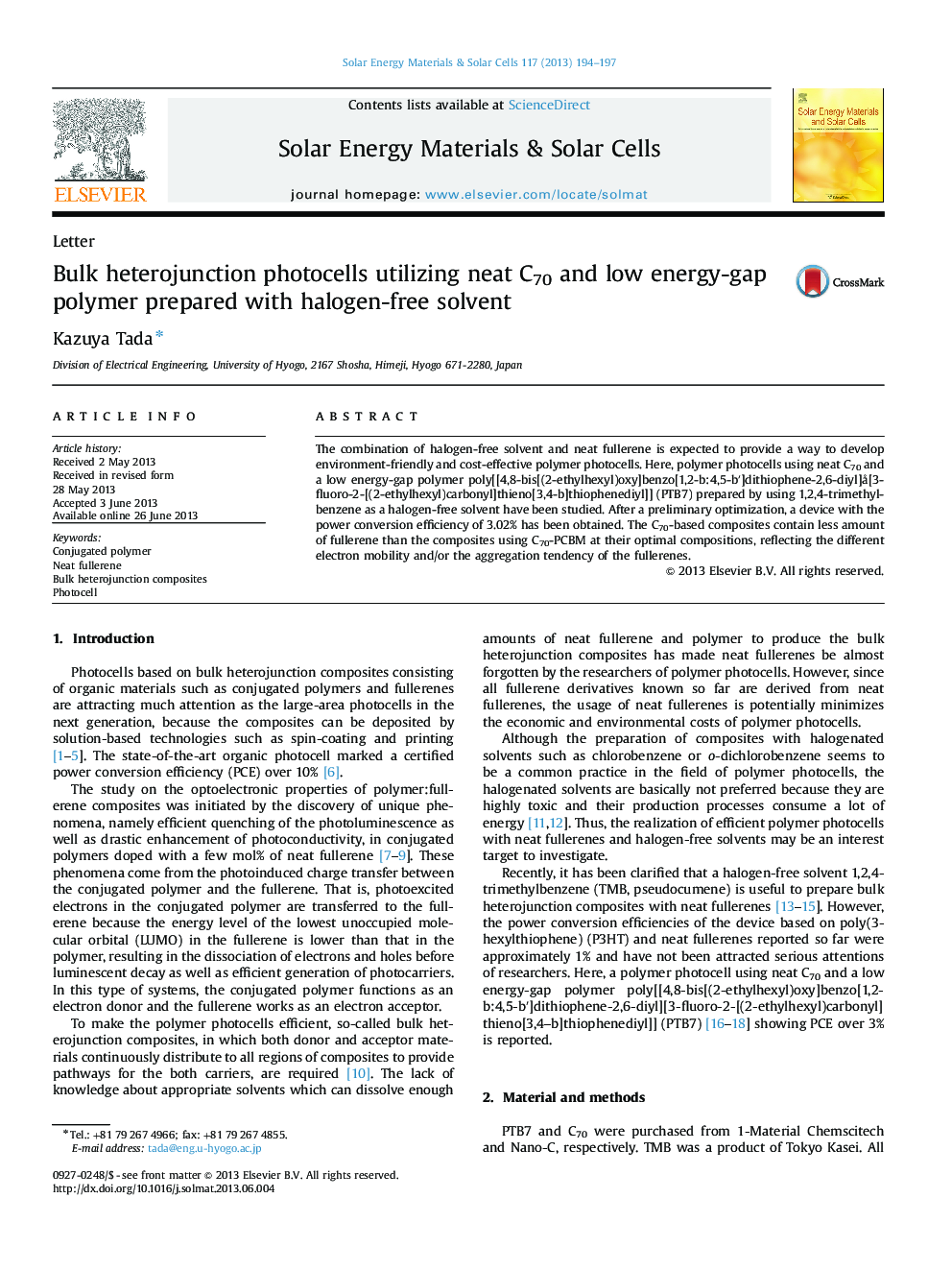| Article ID | Journal | Published Year | Pages | File Type |
|---|---|---|---|---|
| 6536194 | Solar Energy Materials and Solar Cells | 2013 | 4 Pages |
Abstract
The combination of halogen-free solvent and neat fullerene is expected to provide a way to develop environment-friendly and cost-effective polymer photocells. Here, polymer photocells using neat C70 and a low energy-gap polymer poly[[4,8-bis[(2-ethylhexyl)oxy]benzo[1,2-b:4,5-bâ²]dithiophene-2,6-diyl]Ã¥[3-fluoro-2-[(2-ethylhexyl)carbonyl]thieno[3,4-b]thiophenediyl]] (PTB7) prepared by using 1,2,4-trimethylbenzene as a halogen-free solvent have been studied. After a preliminary optimization, a device with the power conversion efficiency of 3.02% has been obtained. The C70-based composites contain less amount of fullerene than the composites using C70-PCBM at their optimal compositions, reflecting the different electron mobility and/or the aggregation tendency of the fullerenes.
Keywords
Related Topics
Physical Sciences and Engineering
Chemical Engineering
Catalysis
Authors
Kazuya Tada,
